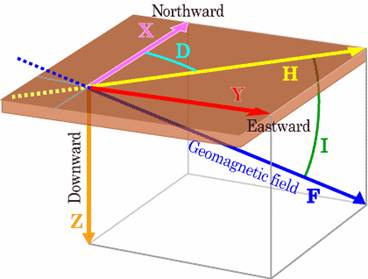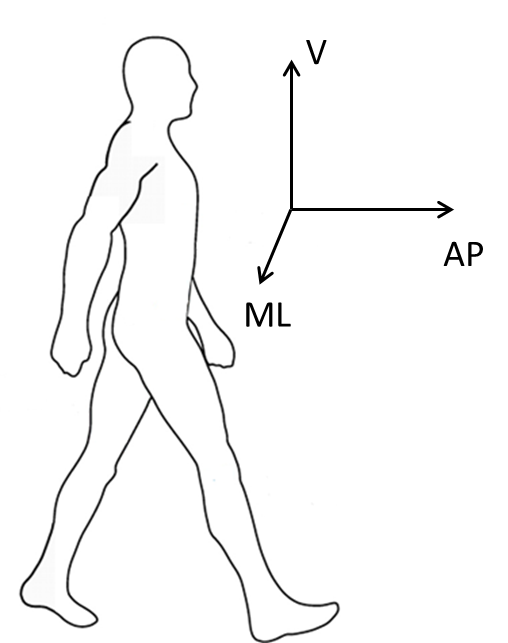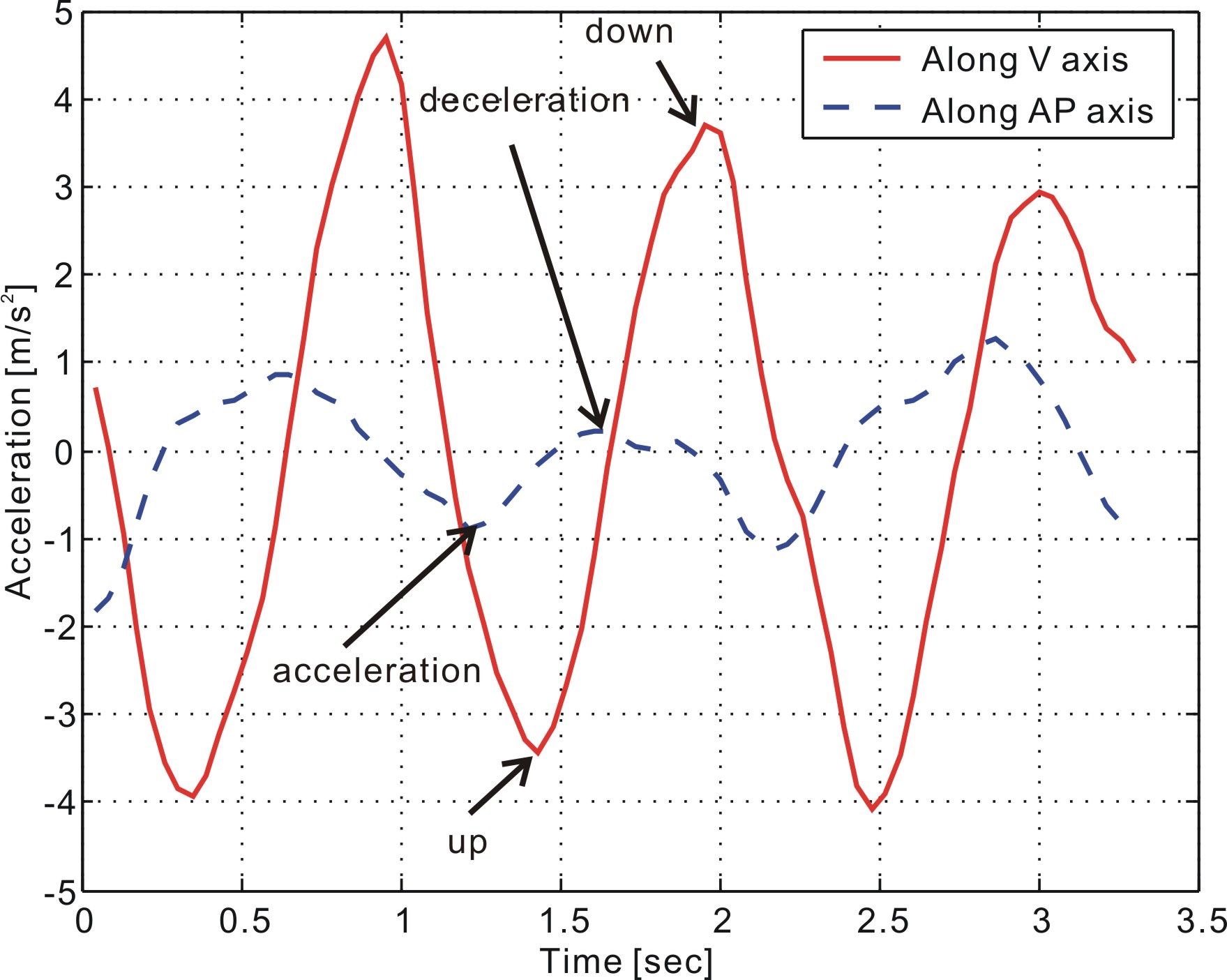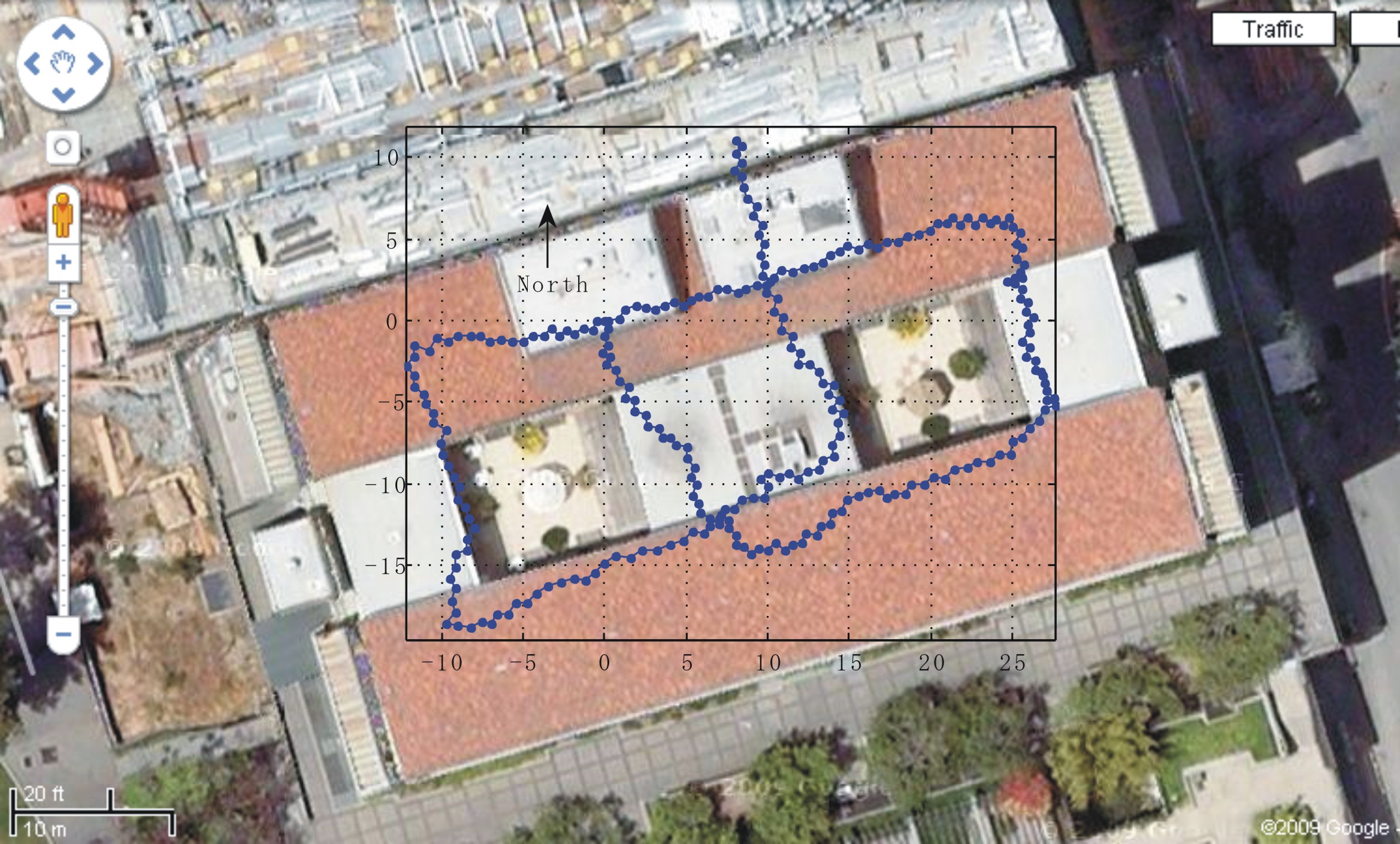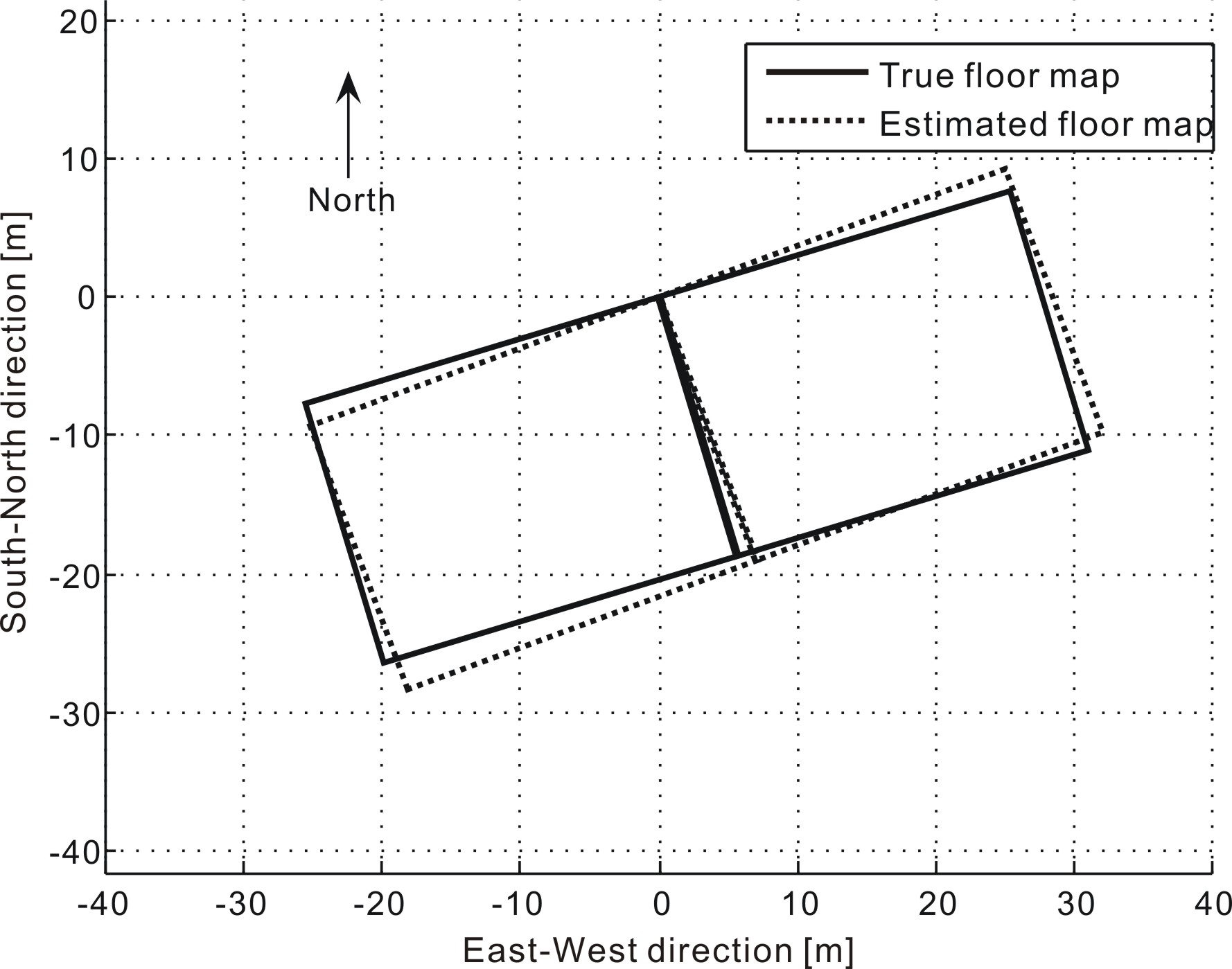Study route choice of drivers
Purpose
The purpose of this research is to identify factors that affect the route choice of drivers. This research helps improve the delivery of real-time information. It also helps us understand how driver behaves, leading to better traffic prediction and better control.
Data
- Flow data (in [vehicle/hour] with 5-min aggregation) on both mainline and off-ramps from freeway loop detectors (Source: PeMS)

- Messages posted on Changeable Message Signs (CMS) (Source: Caltrans CMS API)
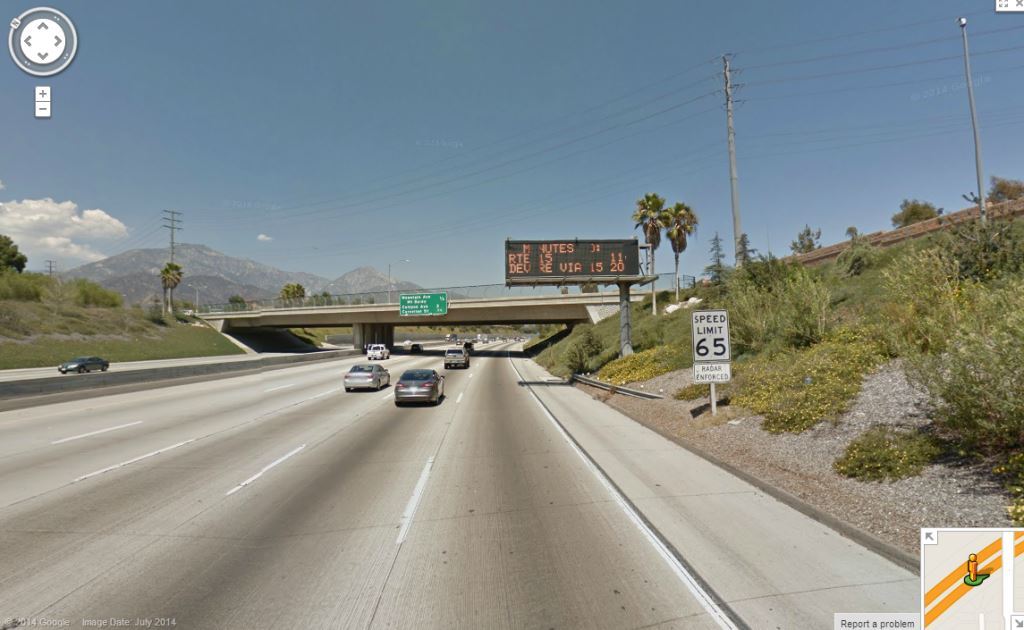
Finding 1
CMS accident message does not have significant causal effect on route choice of drivers.
Here below is a case study to illustrate the point. This CMS displayed information about an accident at Euclid from 16:25 to 17:18. It displayed travel time during the rest of the time.
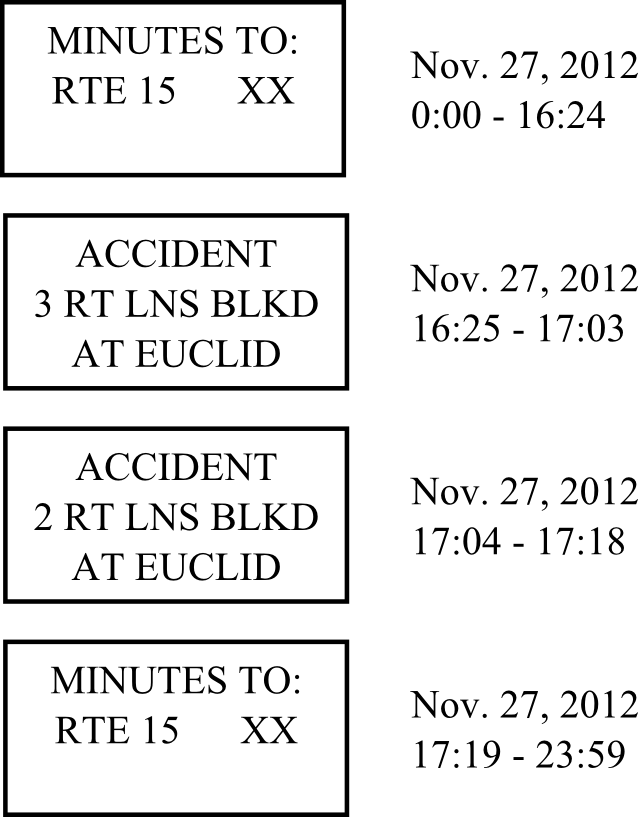
When the red curve is higher, more drivers change their route to take the next off-ramp instead of remaining on the freeway. You can see the route choice of drivers actually happens before the accident message is displayed.
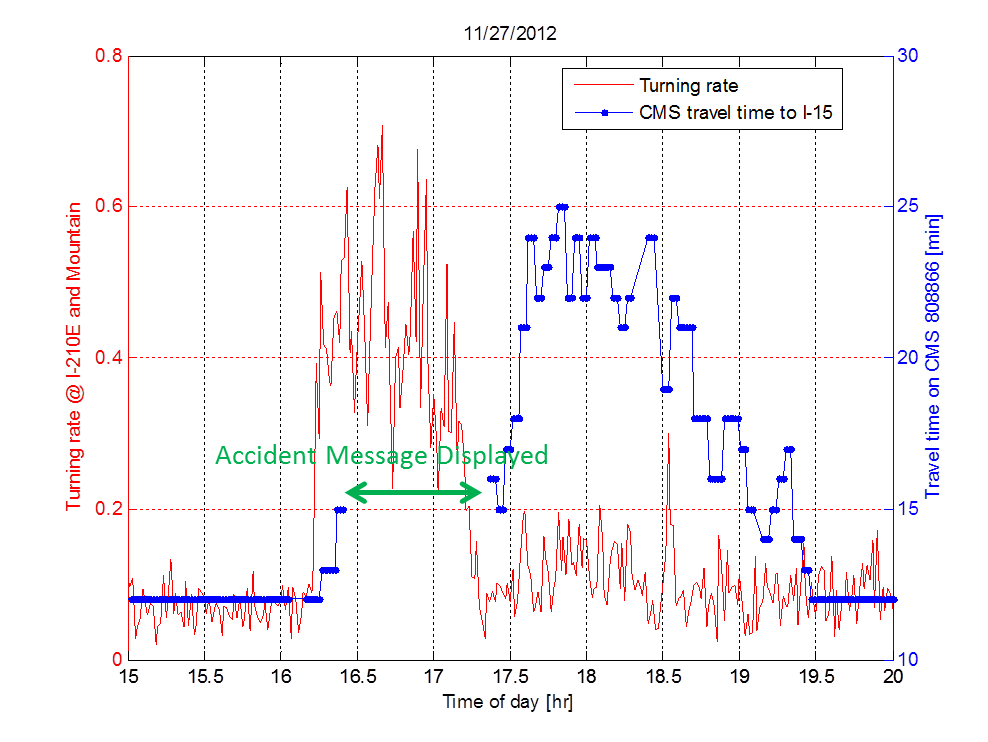
Statistical analysis based on correlation is not appropriate here. See Xuan & Kanafani (2014) for details on the causal statistical analysis, which is similar in nature to regression continuity.
Finding 2
Drivers are more likely to change their route and detour through nearby arterial streets when they see congestion on the freeway, i.e., drivers have to see it to believe it. Visual congestion (blue curve) seems to have a strong correlation with the route choice of drivers (red curve).
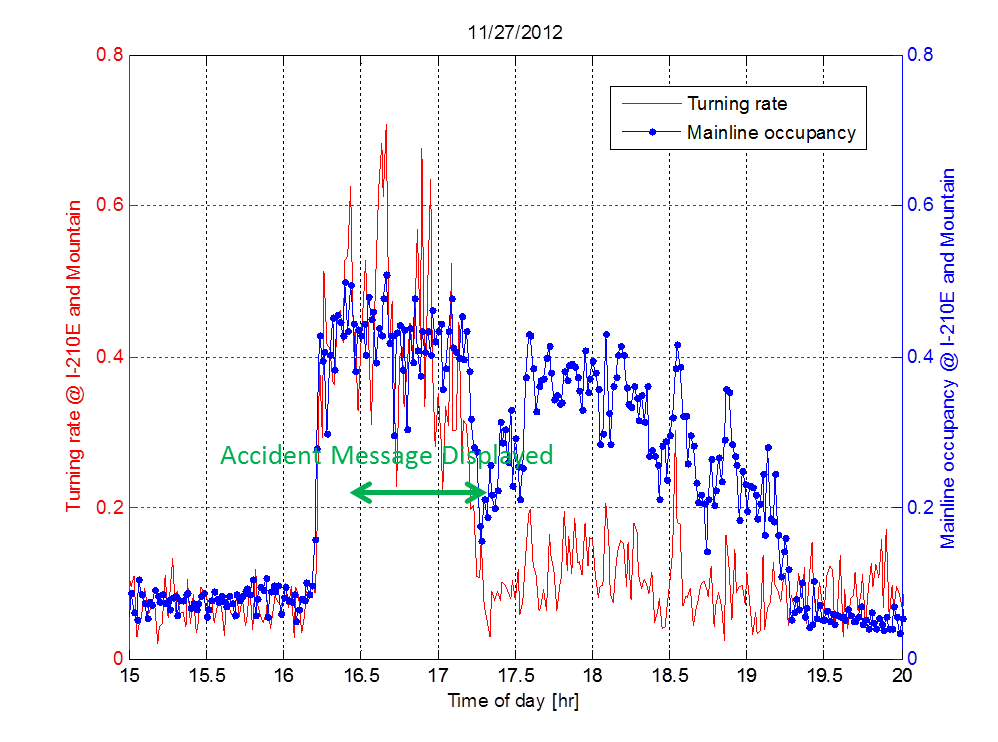
This finding is used to build a new model that can predict route choice of drivers based on mainline congestion level. When compared with the benchmark method that averages historical data, the new model performs better at all 23 sites across southern California.
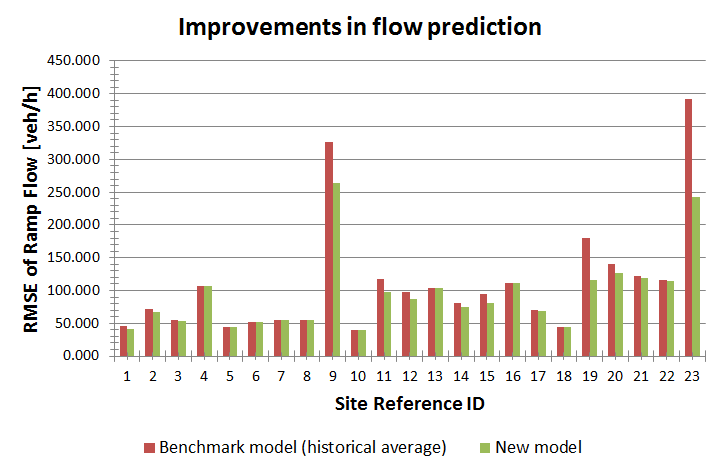
Representative publication
- Xuan, Y., Kanafani, A. (2014). Evaluation of the Effectiveness of Accident Information on Freeway Changeable Message Signs: A Comparison of Empirical Methodologies. Transportation Research Part C: Emerging Technologies, in print. [Link] [PDF]
- Xuan, Y., Kanafani, A., Modeling self-informed dynamic route choice of drivers, under draft.
